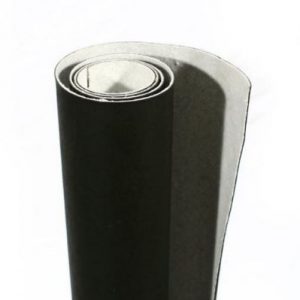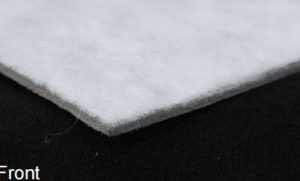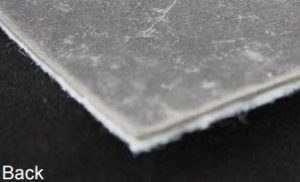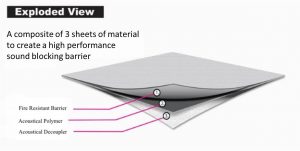No products in the cart.
What does it mean to Soundproof Something?

05
Jun
When you think to “soundproof” a wall or floor, it is difficult to quantify. Unlike light, which is generally blocked or not blocked, sound is a gray area. Certain walls block “more” sound than others, but no wall is completely soundproof.
Sound is measured in decibels (dBs) while soundproofing is measured in STC, or Sound Transmission Classification. This is how much sound a wall, window, or floor blocks at many different frequencies.
For instance, some windows are better at blocking low, rumbling sounds (heavy trucks), while others are better at blocking high pitched sounds (speedy motorcycle). The STC of the window averages its ability to block all of these sounds in a single number.
Basics of Soundproofing
In order to understand the way that soundproofing works, you first need to become familiar with the components of sound: mass, space, and dampening. The more space that you put between you and the sound, obviously the less noise you will hear. Throw in mass between you and the origin of the sound and you will realize that the sound dissipates even more. This is the result of dampening. When you put these three things together, you will get the quiet environment that you have always dreamed of.
- Add Mass to reflect sound back toward its source. The mass law states that every doubling of mass creates a 6 dB decrease in volume.
- Add Limpness, either as an air gap or soft pliable material, in order to allow dampening. In construction, we also call this decoupling.
Soundproofing a Window
Some windows block much more sound than others. “Double Pane” windows are essentially two layers (panes) of glass, separated by a thin air gap so that it has significant Mass and Decoupling.
Single pane windows may be laminated or glazed, adding some extra mass to the glass. This is often required in “debris fields” where Hurricanes and other adverse weather events occur. By upgrading from single-pane to double-pane windows, you can generally expect a significant increase in STC.
See our Article on How to Soundproof a Window for Traffic Noise
Soundproofing a Floor
Commercial Acoustics sells things like soundproof flooring materials, soundproof wall material, soundproof window material, etc., but the question still remains how these projects actually function as a unit to make a place more quiet than normal.
For starters, flooring materials like the Floor Blokker, are materialistically inclined to produce a quiet environment. It does this through a process we like to call “damping”. Putting layers of sound flooring onto the floor itself or underneath the floor, like the Floor Blokker, helps to absorb sound waves we produce when walking. So instead of adding tens of layers onto a barefloor and calling it soundproof, the Floor Blokker was designed. Due to the fact that sound travels through vibration, adding a layer between the bottom floor and the top visible floor could help reduce noise levels by as much as 75% not to mention that the Floor Blokker is a mold resistant material. This compact material is easily installed underneath your floor and, in turn, provides with the quiet steps you always wished to not hear while maintaining an STC/IIC rating of 50.
Soundproofing a Ceiling
Soundproofing a ceiling works very similarly to soundproofing a floor. In fact, sound proofing walls, ceilings, and floors all pretty much utilize the same way of soundproofing. Although dampening works for ceilings, you can only add so many layers. Commercial Acoustics uses a product called the Drop Ceiling Noise Blokker (DCNB), to act as three layers of dampening material while only being about an inch thick. The layers are, respectively: fire resistant barrier, acoustic polymer, and acoustic decoupler. Together, these three layers decrease sound waves and their patterns causing them to not vibrate at all. This, in turn, leads to a noticeably quiet environment as the DCNB has an STC rating of 28. The Ceiling Blokker works both ways as an insulant as well as a soundproof material because either way that the sound waves are coming from, they can’t penetrate the material which causes it to act as a dual soundproof object. This would be great if you were a musician who didn’t want to disturb others that are living above you, and well if they are living below you, then you always have the Floor Blokker that can be used as a walling material a well.




